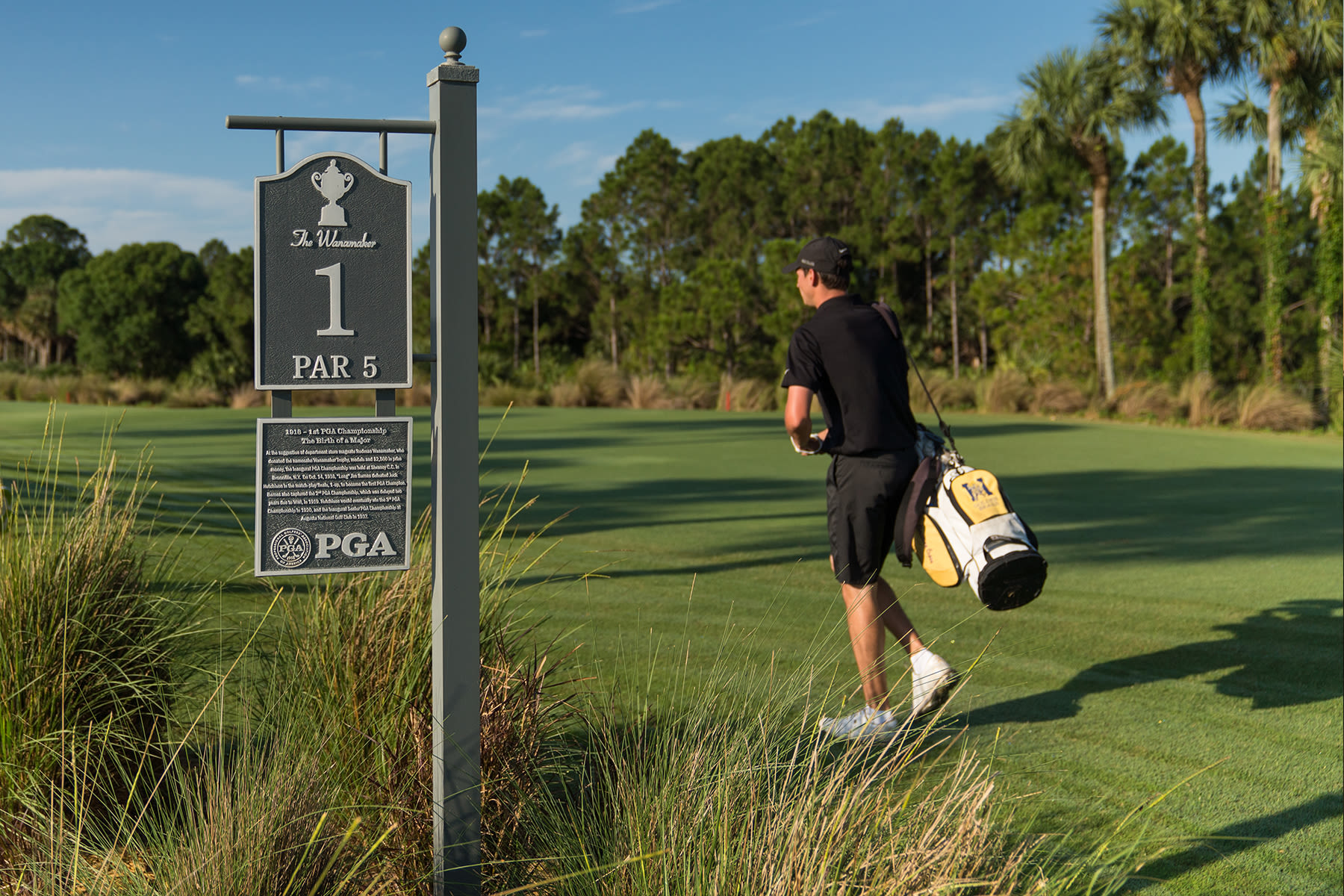From the PGA
The path less traveled
By Mark Herrmann
Published on

Chances are, it was not really Mark Twain who said, “Golf is a good walk spoiled.”
Although the phrase is widely attributed to him, there was no record of him ever having said it before a Saturday Evening Post article in 1948, which was 38 years after his death.
The website quoteinvestigator.com indicated that the aphorism was used in 1903 by an unnamed lawn tennis player and in 1904 by the novelist Harry Leon Wilson. In any event, and no matter who said it first, the tart barb toward golf remains a respectful ode to walking.
Walking was and is a focal point in the game and many people still believe each brings out the best in the other. The Walking Golfers Society is a group founded on that very concept.
Rob Rigg, a Toronto, Ontario native who established it, wrote about an insight he gained after he graduated from college: “As I took a step back and began to think less about my game, and more about the experience of walking the course, I began to play better.” Noting that he soon became a single-digit handicap, he added, “What had changed? Simply—enjoying the walk.”
Even the most enthusiastic walking golfers do not begrudge against cart-riders. They understand that some people simply cannot physically walk a course. They also acknowledge that for various reasons, including revenue streams and pace of play, many courses require golfers to ride.
Riding vs. walking was a hot debate during the early years of what was then known as the Senior PGA Tour, with Arnold Palmer among the most outspoken against carts. Once, when Chi Chi Rodriguez noticed that The King saw him driving away from a tee, he sheepishly said, “It’s OK, Arnie, my cart uses Pennzoil” (mindful of the company that Palmer endorsed). These days, though, the PGA Tour Champions is overwhelmingly a walking group.
Pros are more fitness oriented now and they appreciate the rewards and pleasures of going down the fairways on foot.
There are obvious physical benefits to walking the course. The often-cited study done in 2008 by Neil Wolkodoff, director of the Rose Center for Health and Sports Sciences in Denver, revealed that golfers who walked and carried their clubs for nine holes burned 721 calories as opposed to the 411 who rode in carts. Then there are the surveys, such as one released in early 2019 by Boston University School of Medicine, that say that walking in general reduces the risk of dementia or Alzheimer’s disease.
Beyond that, Wolkodoff’s findings backed the feeling of many walking golfers: They play better when they’re not riding. His subjects averaged a stroke or more lower when they walked.
Michael Hebron, a PGA Hall of Fame instructor in Smithtown, N.Y., said, “When walking, players can see and feel the golf course in ways that riding does not offer. When walking, golfers can gather more information that supports how best to play the ever-changing course conditions than when riding.
The rhythm of walking is different than riding quickly in a cart, and this helps a golfers pace of play and swing. When walking down a fairway you see it and the in green in ways that are more helpful for approach shots than from a cart.”
Which is not to say carts are bad for the game. At a time when some courses are struggling to make ends meet, the extra income from cart rentals helps pay the bills and keep the pro shop open. But for many people, if given the choice, they will cover the course on their own power. Their feeling--with due respect to Mark Twain or Harry Leon Wilson or some other philosopher--is that golf is a good walk, period.